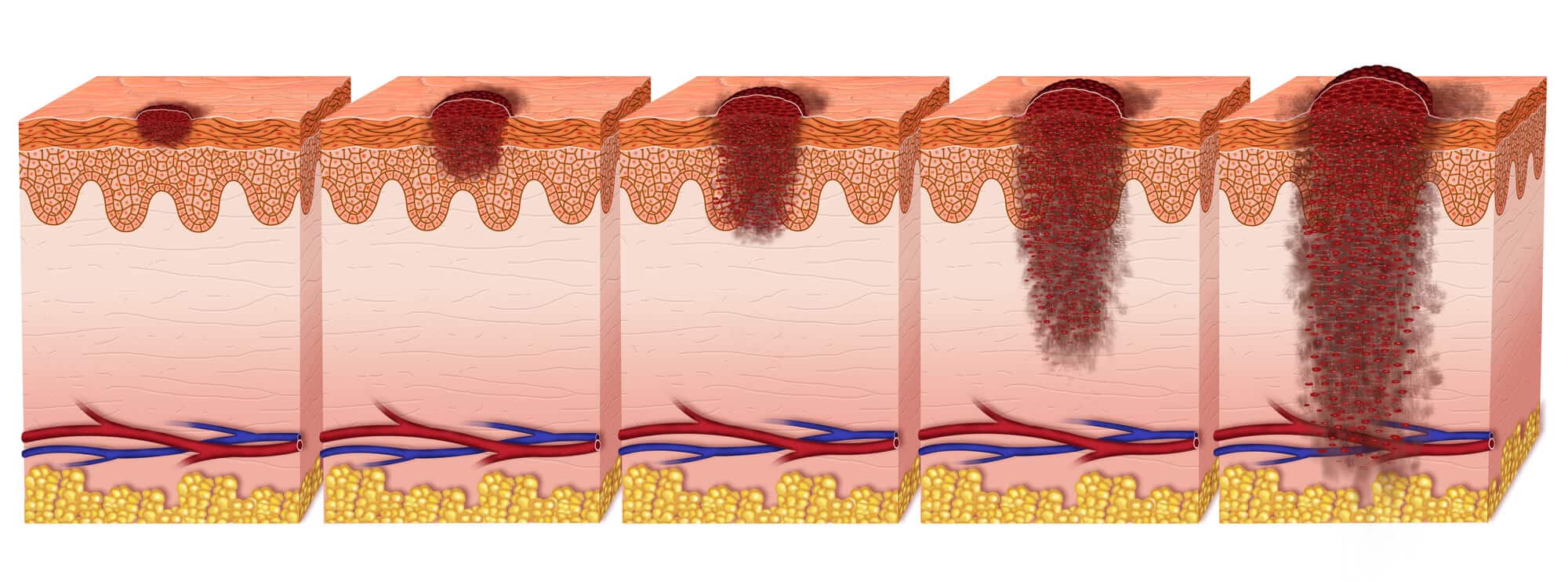Using three-dimensional models of melanoma cancer, researchers were able to decipher the arrival of metastases to the brain

"In an advanced stage of melanoma skin cancer, 90% of patients will develop brain metastases," explains Prof. Ronit Sachi-Painero From the Sackler Faculty of Medicine at Tel Aviv University. "This is a questionable figure. We expect to see metastases in the lungs and liver, but the brain should be a spare organ. The blood-brain barrier keeps harmful substances from entering, and here it supposedly doesn't do the job - cancer cells from the skin circulate in the blood and manage to reach the brain. We asked ourselves who in the brain the cancer cells 'talk' to in order to infiltrate".
In a study led by Prof. Sacchi-Painero and PhD student Sabina Pozzi, the research team for the first time succeeded in deciphering the mechanism that allows skin cancer to send metastases to the brain, and were able to use existing treatments to delay the spread of metastases in the brain by 60% to 80%. The study was published in the journal JCI Insight.
How do cancer cells infiltrate the brain?
From laboratory data collected on patients, the researchers from Tel Aviv University found that the cancer cells "recruit" cells called astrocytes, star-shaped cells found in the spinal cord and brain and responsible for homeostasis in the brain. "Astrocytes are the first to come to correct the situation in the event of a stroke or trauma, for example, and it is precisely with them that the cancer cells talk, replace molecules and destroy them," explains Prof. Sachi-Painero. "Not only do the cancer cells recruit the astrocytes so that they don't stop the spread of metastases, they create local inflammations in the communication areas that increase the permeability through the blood-marrow barrier, as well as the division and migration of the cancer cells."
Prof. Sachi-Painero adds that "the communication between them is reflected in the fact that the astrocytes begin to secrete a protein that promotes inflammation called MCP-1 (also known as CCL2), and in response to this, the cancer cells begin to express its receptors CCR2 and CCR4 . We suspected that these receptors are also responsible for the destructive communication with the astrocytes."
XNUMXD model of melanoma
To test their hypothesis, Prof. Sacchi-Painero and her team tried to inhibit the expression of the protein and the receptors in genetically engineered model animals and in 1D models of primary melanoma and brain metastases. To this end, the researchers used a well-known treatment method, which includes treatment with an antibody (biological molecule) and a small (synthetic) molecule, and which is intended, among other things, for the treatment of liver problems, kidney problems related to diabetes (nephropathy) and heart disease. The treatment with an antibody (biological molecule) and a small molecule (synthetic) are designed to block the MCP-XNUMX protein.
Also, the researchers used CRISPR technology - which was used for genetic editing to cut the two genes that express the two relevant receptors, CCR2 and CCR4. With each of the methods, the researchers were able to delay the spread of metastases.
Prof. Sachi-Painero: "These treatments were able to delay both the penetration of cancer cells into the brain and the spread of cancer in the brain. We reached a 60% to 80% delay, depending on the stage of the intervention. In addition, the best results were obtained with the treatment carried out immediately after the surgery to remove the original tumor, when we were able to prevent the metastases from entering the brain in advance, therefore I believe that the treatment is suitable for the clinic as a preventive measure for the development of metastases. It should be understood that melanoma metastases in the marrow are very aggressive. Both the antibody and the small molecule, which are intended to treat mainly sclerosis, diabetes, liver fibrosis and heart disease, and as a biomarker in other types of cancer, have already been tested on humans in clinical trials, so we know that these treatments are safe, and we can try to make them a new indication for melanoma."
The research partners from Tel Aviv University were Prof. Adi Barzel, Dr. Assaf Medi, Prof. Iris Barshak, Prof. Eran Perelson, and Prof. Ina Slutsky, as well as partners from the NIH: Prof. Eitan Rupin from John's Hopkins, Prof. Henry Bram and Thomas Hyde, and from the University of Lisbon - Prof. Helena Florindo.
The new study was funded by the European Research Council (ERC Advanced), the Melanoma Research Alliance (MRA), the Kahn Foundation, the Israel Cancer Research Fund (ICRF) and the National Science Foundation (ISF).
More of the topic in Hayadan:
